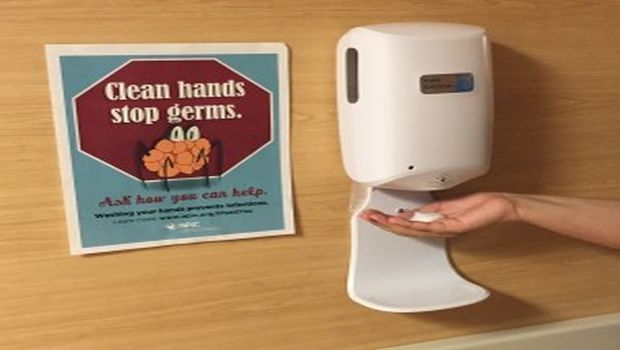CDC's Safe Healthcare Blog: Clean Hands Stop Germs


Today, on CDC’s Safe Healthcare Blog, Laura Buford with the Association for Professionals in Infection Control and Epidemiology (APIC), calls for healthcare professionals to pledge to prevent infections by cleaning their hands in honor of International Infection Prevention Week (IIPW).
Everyone, both healthcare providers and patients, has important roles to play. APIC has created new ‘Clean hands stop germs’ posters, stickers and decals encouraging patients and families to ask their providers questions about hand hygiene.
The American Hospital Association (@AHAHospitals) and APIC (@APIC) will host a Twitter chat focusing on how patients and healthcare providers can work together to reduce healthcare-associated infections on Oct. 21, 2015 at 12 p.m. EDT. The hashtag for the chat is #IIPWChat.
Join the conversation at: http://blogs.cdc.gov/safehealthcare/
For more information on IIPW: http://professionals.site.apic.org/
The Guardians of Animal Health: Who Are Veterinary Infection Preventionists?
March 21st 2025Veterinary infection control experts Leslie Kollmann, BS, AAS, CVT, CIC, Denise Waiting, LVT, and Leslie Landis, LVT, BS, discuss challenges, zoonotic disease risks, and the importance of education, collaboration, and resource development in animal care facilities.
The Latest on CLABSIs and CAUTIs: Evidence-Based Approaches for Infection Prevention
February 27th 2025Health care–associated infections like CLABSIs and CAUTIs threaten patient safety. Learn evidence-based strategies, new technologies, and prevention protocols to reduce these infections and improve outcomes.
Resilience and Innovation: The Pivotal Contributions of Black Americans to Health Care and Medicine
February 24th 2025During Black History Month, we honor the resilience and contributions of Black medical professionals in health care. Despite barriers, they have led transformative changes, advocating for equitable access and medical excellence. Recognizing their impact ensures a more inclusive health care future for all.
Glove Usage Guideline: From The Joint Commission, CDC, and World Health Organization
February 17th 2025Proper glove use is crucial in health care settings to prevent infections. Guidelines from TJC, CDC, and WHO stress correct selection, usage, and disposal to minimize health care–associated infections (HAIs) and cross-contamination risks. Infection preventionists (IPs) play a key role in educating staff, enforcing compliance, and improving patient safety through standardized glove practices.